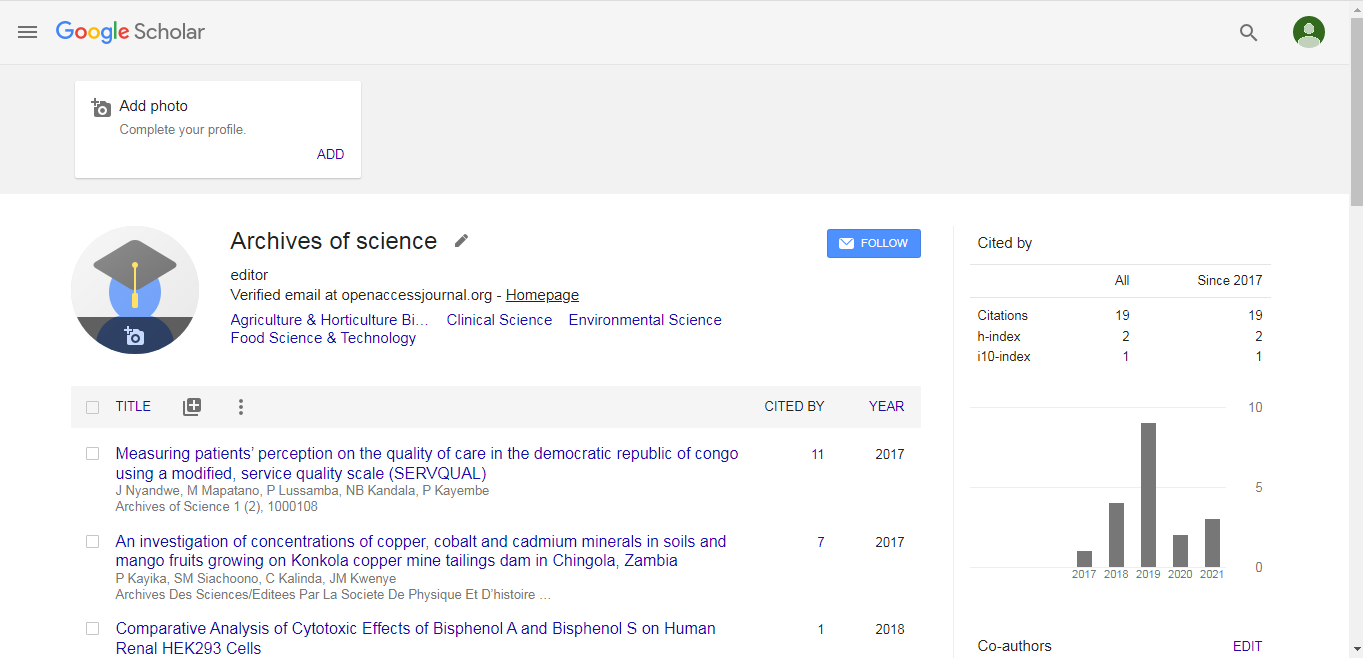Biomaterials 2019: Hybrid smart nanocrystals and the shielding effect of phospholipid bilayer for biomedical application - Valentina Cauda - Polytechnic University of Turin
*Corresponding Author:
Copyright: © 2020 . This is an open-access article distributed under the terms of the Creative Commons Attribution License, which permits unrestricted use, distribution, and reproduction in any medium, provided the original author and source are credited.
Abstract
Statement of the Problem: Zinc oxide nanocrystals (ZnO NCs), thanks to their particular houses, are receiving an awful lot attention for his or her use in nanomedicine, specifically for remedy towards most cancers. To be efficiently hired as diagnostic and healing (but theranostic) gear, quite dispersed, stable and non-toxic nanoparticles are required. In the case of ZnO NCs, there may be nonetheless a lack of knowledge about cytotoxicity mechanisms and balance in the biological context, as well as immunological response and hemocompatible features. We for that reason advocate a singular approach to render strong, immune and hemocompatible ZnO NCs in diverse organic media the usage of synthetic and herbal phospholipidic bilayers.
Introduction: Poly-lactic-co-glycolic acid (PLGA), an FDA accredited copolymer, is one of the most exploited polymers inside the design and formula of drug delivery systems for biomedical applications owed to its biodegradability, biosafety, biocompatibility, versatility in formula and functionalization. Supplementary, nanocarriers primarily based on PLGA make certain an top-quality bioavailability of the encapsulated drug by way of protective it from untimely degradation in the biological environment, supplying a sustained (tunable degradation kinetics) and targeted shipping or facilitating intracellular penetration of bioactive compound and reducing the side outcomes. In this context, PLGA nanoparticles have been considerably used for various programs, inclusive of: neuronal/cerebral disorders, cancer remedy, anti-inflammatory, cardiovascular or immune therapy, encapsulating a widely variety of bioactive molecules (specific drugs, proteins, vaccines, nuclei acids). Moreover, those nano systems can be formulated for systemic (parenteral), oral and inhalable (pulmonary) management supplying the possibility to pick out the fine administration course, for this reason making sure the superior bioavailability of the gadget. The advancement in the efficacy of PLGA-based totally nanoparticles in drug delivery packages is contemplated in a countless research presented within the specialized literature as well as inside the incredible variety of micro-/nano formulations which are under medical investigation or are already supplied at the pharmaceutical market being approved by FDA.
From the total wide variety of micro-/nano formulated merchandise handy in the pharmaceutical market (13 nanomedicines products), an important consideration is attributed to micro-nanoparticles based on PLGA. These
clinically permitted nano-primarily based merchandise have impacted treatment of numerous primary illnesses consisting of most cancers, diabetes or special immune problems. Moreover, the robust medical and business effect of drug transport systems, is elucidated in the generated annual revenues that collectively with all FDA-permitted micro-/nano formulated merchandise exceed US $one hundred billion.
Nonetheless, beside the appealing functions of PLGA-based nanoparticles along with: small length, high structural integrity, balance, tunable homes and versatility in floor functionalization, some barriers normally associated with their physicochemical and organic residences among which: poor drug loading, specifically for lipophilic healing agents, excessive burst release, phagocytic uptake, short half ofexistence, immune response, out of control tissue distribution, confine the multilateral exploitation as robust, indeniable drug vendors in biomedicine. In this context, difficulty approximately PLGA nanoparticles-primarily based hybrids arose as a motivation for developing drug shipping systems with flexible physical and chemical residences, unequivocal therapeutic advantages and minimized side effects that could alleviate the constraints of PLGA-based totally vendors. The synthesis of hybrids based on PLGA nanoparticles is a first-rate project within the contemporary chemical engineering for producing providers with tailor-made characteristics in drug delivery packages. Therefore, PLGA-hybrid nanoparticles have turn out to be greater promising method inside the current nanomedicine, improving the pharmacokinetic and biodistribution of the healing system within the biological environments (frame, tissue, cells) at the same time as the facet effects are minimized.
Methodology & Theoretical Orientation: We synthesized amino-functionalized ZnO NCs, and then shielded with phospholipid bilayers either from artificial foundation or herbal bio vesicles. We characterized their structural, morphological, physico-chemical residences, focusing on the coupling mechanism between ZnO NCs and the lipid vesicles. The balance conduct of various hybrid nanocrystals changed into evaluated, evaluating their biodegradation profiles in one-of-akind inorganic and organic media. The examine targets to research how the particle surface chemistry and price ought to affect their aggregation/degradation within the specific media and interaction with cells. We really proved their hemocompatibility in human plasma and their internalization into cancer cells and related cytotoxicity mechanisms. A stimuli responsive activation with the aid of UV-mild turned into investigated for inducing high mortality of cancer cells primarily based on the hybrid NCs.
Findings: We validated that pristine ZnO NCs strongly mixture whilst suspended in each simulated and biological media, displaying small dissolution into probably cytotoxic Zn-cations, additionally barely affecting their crystalline shape. In assessment, excessive colloidal stability and integrity become retained for hybrid lipid-shielded ZnO NCs in all media, followed by means of excessive biocompatibility, efficient cellular internalization and effective killing capacity only upon stimuli-activation. These features render those hybrid ZnO NCs best “Trojan horses” for in addition theranostic programs

 Spanish
Spanish  Chinese
Chinese  Russian
Russian  German
German  French
French  Japanese
Japanese  Portuguese
Portuguese  Hindi
Hindi 